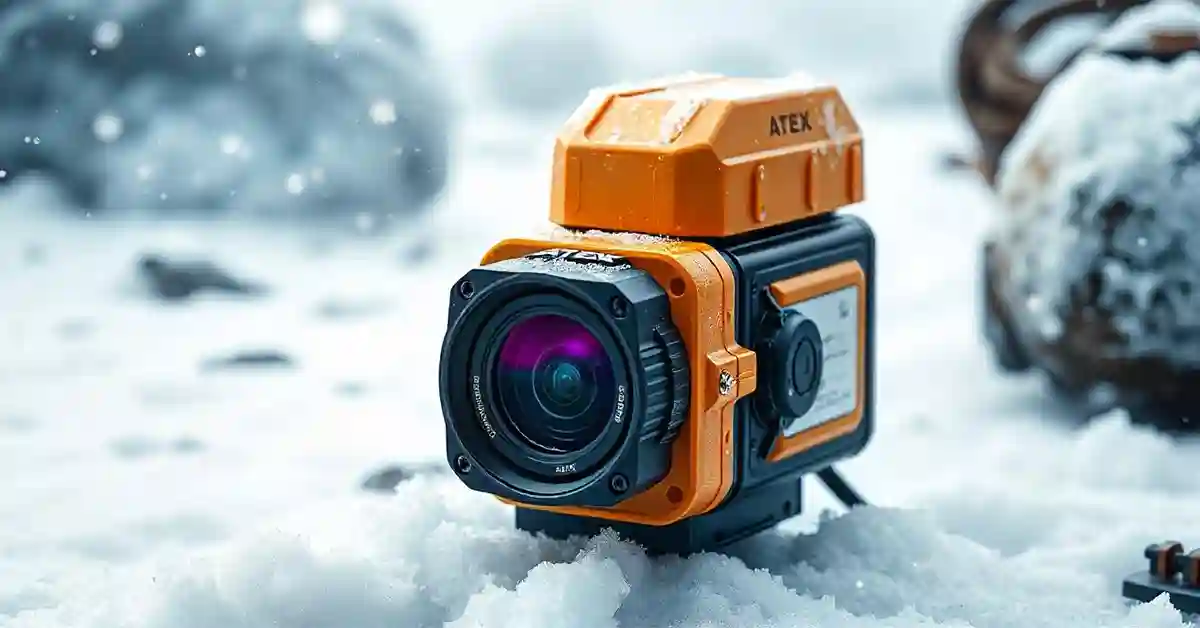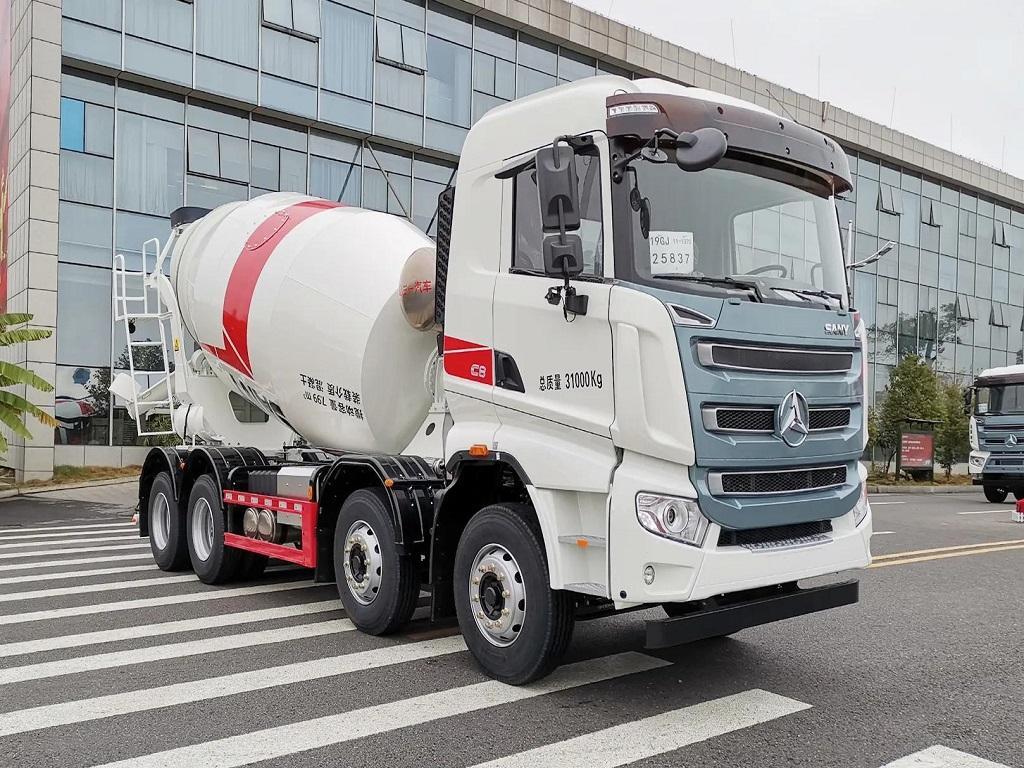In a world where technology continually pushes boundaries, we often wonder about the capabilities of our devices. This curiosity is especially true for those who venture into extreme environments, such as subzero temperatures. One question that often arises is, “Can ATEX cameras withstand subzero temperatures?” These specialized cameras play a crucial role in capturing images in harsh conditions. But what happens when these conditions involve freezing temperatures?
Can ATEX cameras withstand subzero temperatures? The answer to this question holds significant importance for adventure seekers, tech enthusiasts, and professionals working in extreme environments. How do ATEX cameras function in such cold conditions, and what makes them different from regular cameras? In this article, we explore the resilience of ATEX cameras in subzero temperatures, providing insights into their design, functionality, and adaptability.
For those who rely on these cameras for safety and documentation, understanding their capabilities is essential. Knowing whether ATEX cameras can withstand harsh cold can impact decisions in fields ranging from scientific research to industrial safety. Read on to discover more about ATEX cameras and their ability to endure the cold.
Understanding ATEX Cameras
ATEX cameras are designed for use in hazardous environments. They are built to withstand challenging conditions that would typically damage standard cameras. This includes environments with explosive gases, dust, or extreme temperatures.
The key feature of ATEX cameras is their ability to operate safely in potentially explosive atmospheres. They are commonly used in industries such as oil and gas, mining, and chemical processing. Their robust construction and specialized components ensure reliability under tough conditions.
Despite their rugged design, the question remains—can they keep working in subzero temperatures? Understanding the construction and intended use of ATEX cameras helps us evaluate their performance in the cold.
The Science of Subzero Temperatures
Subzero temperatures present unique challenges for electronic devices. At these temperatures, many materials become brittle, and electronic components may fail. When temperatures drop below zero, moisture in the air can freeze, leading to potential damage.
For cameras, cold conditions can affect battery life, lens performance, and electronic circuits. Special considerations must be made to ensure continued operation in freezing conditions. The resilience of ATEX cameras in these conditions depends on their design and the materials used in their construction.
Understanding how subzero temperatures impact electronic devices is crucial for determining whether ATEX cameras can continue to function effectively.
Design Features of ATEX Cameras
ATEX cameras incorporate specific design features to enhance durability. These features include rugged casings, reinforced glass lenses, and sealed components. Each element is carefully selected to protect the camera from harsh conditions.
The casings of ATEX cameras are often made from materials like stainless steel or aluminum, which resist corrosion and physical damage. The lenses are coated to prevent scratching and minimize glare. Seals and gaskets ensure that no dust or moisture can penetrate the camera’s interior.
These design features make ATEX cameras robust, but the question remains—are they enough to withstand subzero temperatures? Exploring these features provides insight into their potential performance in the cold.
Materials Used in ATEX Cameras
The choice of materials in ATEX cameras is critical to their performance. Manufacturers select materials that offer high resistance to temperature fluctuations, impact, and corrosion. These materials help ATEX cameras resist the challenges of harsh environments.
Common materials include stainless steel, which provides strength and resistance to rust. Reinforced plastics may be used for lightweight components. The glass used in lenses is often treated to enhance clarity and durability.
By examining the materials used in ATEX cameras, we can assess their ability to function in subzero temperatures. The right materials can make the difference between a camera that thrives in the cold and one that fails.
Impact of Cold on Camera Performance
Cold temperatures can affect camera performance in several ways. Batteries lose efficiency, leading to reduced operational time. The viscosity of lubricants increases, which can impact mechanical components. Additionally, condensation may form on lenses, affecting image quality.
For ATEX cameras, these challenges must be addressed to maintain functionality in subzero temperatures. Manufacturers may incorporate heating elements or specially designed enclosures to combat these issues.
Understanding how subzero temperatures impact camera performance helps us determine the limits of ATEX cameras in such environments. The extent of these effects varies based on the specific camera model and design.
Battery Performance in Cold Environments
Battery performance is a critical factor for cameras operating in cold environments. At low temperatures, chemical reactions in batteries slow down, reducing their capacity and lifespan. This can lead to cameras shutting down unexpectedly.
Manufacturers of ATEX cameras may use specialized batteries designed for cold temperatures. These batteries have higher energy densities and are less affected by temperature changes. Alternatively, external battery packs with insulation can be used to extend operational time.
Assessing battery performance in subzero temperatures is essential for understanding the capabilities of ATEX cameras in cold conditions. Without reliable power, even the most rugged camera cannot function effectively.
Lens Functionality in the Cold
Lens functionality is another area of concern for cameras in subzero temperatures. Cold weather can cause lenses to fog up, affecting clarity and image quality. Additionally, any moisture inside the lens can freeze, leading to damage.
ATEX cameras are often equipped with lens coatings that repel moisture and reduce fogging. Some models include internal heating elements to maintain optimal lens temperature and prevent icing.
Exploring how lenses perform in cold conditions provides insight into the effectiveness of ATEX cameras in capturing clear images in subzero temperatures. A clear lens is critical for capturing accurate and useful images.
Electronic Component Resilience
Electronic components are sensitive to temperature changes. In subzero temperatures, circuits can contract and expand, leading to potential failures. Additionally, certain materials may become brittle, increasing the risk of damage.
ATEX cameras are designed with electronic components that are less susceptible to temperature fluctuations. Manufacturers may use flexible circuit boards or protective coatings to enhance durability.
By understanding the resilience of electronic components, we can evaluate the overall reliability of ATEX cameras in subzero temperatures. Reliable electronics are crucial for ensuring consistent camera performance.
Real-World Applications of ATEX Cameras
ATEX cameras are used in a variety of real-world applications. These include monitoring industrial processes, documenting scientific research, and supporting rescue operations. Each application presents unique challenges and requires reliable equipment.
In industries like oil and gas, ATEX cameras capture essential data in dangerous environments. For scientists, these cameras document environmental changes in remote locations. Rescue teams use ATEX cameras to assess hazardous situations.
Understanding the diverse applications of ATEX cameras helps us appreciate their importance in extreme environments. Successful deployment in these scenarios requires cameras that can withstand subzero temperatures.
Case Studies of ATEX Cameras in Extreme Conditions
Several case studies highlight the performance of ATEX cameras in extreme conditions. These real-world examples provide valuable insights into their capabilities and limitations.
One case study involved the use of ATEX cameras in an Arctic research expedition. The cameras successfully captured high-quality images despite freezing temperatures. Another case study focused on industrial use in cold climates, where ATEX cameras monitored equipment effectively.
These case studies demonstrate that ATEX cameras can operate in subzero temperatures, but success depends on proper preparation and equipment selection. Analyzing these examples offers lessons for future deployments.
Preparing ATEX Cameras for Cold Environments
Proper preparation is essential for using ATEX cameras in cold environments. This involves selecting the right equipment, configuring settings, and protecting the camera from extreme temperatures.
Steps may include pre-warming batteries, using thermal insulation, and adjusting exposure settings. Additionally, regular maintenance ensures that seals and components remain in good condition.
By preparing ATEX cameras for cold environments, users can maximize their performance and longevity. Proper preparation is a critical step in ensuring successful operation in subzero temperatures.
Maintenance Tips for ATEX Cameras
Regular maintenance is essential for keeping ATEX cameras in top condition. Maintenance tasks include cleaning lenses, checking battery contacts, and inspecting seals for damage.
In cold environments, additional maintenance may be required to prevent condensation, ice buildup, and component wear. Periodic testing ensures that the camera continues to perform reliably.
Following maintenance tips helps users extend the lifespan of their ATEX cameras and improve their performance in subzero temperatures. Consistent care is key to reliable camera operation.
Common Challenges Faced by ATEX Cameras
ATEX cameras face several common challenges when used in subzero temperatures. These challenges include battery drain, lens fogging, and electronic malfunctions.
Addressing these challenges requires careful planning and the use of appropriate equipment. By understanding potential issues, users can take proactive measures to mitigate risks.
Identifying common challenges helps us develop strategies for overcoming them and ensuring that ATEX cameras perform well in cold environments. Overcoming these challenges is essential for reliable camera operation.
Innovations in ATEX Camera Technology
Innovations in ATEX camera technology continue to improve their performance in extreme conditions. New materials, improved battery technology, and advanced sensor designs enhance camera resilience.
Manufacturers are developing cameras with better thermal management and enhanced image processing capabilities. These innovations increase the versatility and reliability of ATEX cameras in subzero temperatures.
Exploring innovations in ATEX camera technology provides insight into future advancements and their impact on camera performance. Continued innovation ensures that these cameras remain effective tools in extreme environments.
Can ATEX Cameras Withstand Subzero Temperatures?
The question of whether ATEX cameras can withstand subzero temperatures is complex. While these cameras are designed for harsh environments, their performance in extreme cold depends on several factors.
Success in subzero temperatures requires proper equipment selection, preparation, and maintenance. By addressing potential challenges and leveraging technological innovations, ATEX cameras can operate effectively in cold conditions.
Ultimately, the ability of ATEX cameras to withstand subzero temperatures is a testament to their robust design and the continued advancements in camera technology.
FAQs With Answers
What are ATEX cameras used for?
ATEX cameras are used in hazardous environments, such as oil and gas industries, where there is a risk of explosions. They are designed to capture images safely in these conditions.
Can ATEX cameras work in subzero temperatures?
Yes, ATEX cameras can work in subzero temperatures, but their performance depends on the model and proper preparation for cold environments.
Do ATEX cameras need special maintenance in cold conditions?
Yes, ATEX cameras require special maintenance in cold conditions to prevent issues like condensation and battery drain. Regular checks are essential.
What materials make ATEX cameras durable in extreme environments?
ATEX cameras are made from materials like stainless steel and reinforced plastics, which offer durability and resistance to harsh conditions.
Are there innovations improving ATEX camera performance?
Yes, innovations like advanced sensors and thermal management systems are improving ATEX camera performance in extreme environments.
In conclusion, ATEX cameras are powerful tools designed for challenging environments. Their ability to withstand subzero temperatures highlights their robust construction and the continuous advancements in camera technology. For adventure seekers, tech enthusiasts, and professionals working in harsh conditions, understanding the capabilities of ATEX cameras is essential. With the right preparation and maintenance, these cameras can deliver reliable performance in even the coldest environments. Explore further resources to ensure your ATEX cameras meet your needs and withstand the challenges of subzero temperatures.










